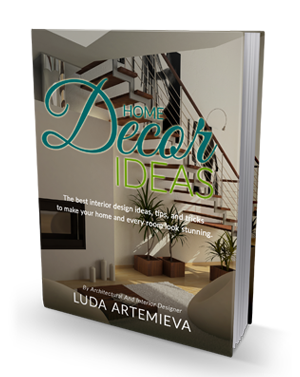Architecture can be many things; a physical representation of a movement or national feeling, designed purely for function, or a celebration or commemoration. As a result, buildings can come in many shapes, styles and sizes. From Jacobean to Brutalism, architecture has gone through a wide variety of changes over the years and is just as varied and thought-provoking as art.
What’s your favourite architectural style? Do you enjoy the ornate, calligraphic shapes of the Gothic period or the bold, clean lines of Modernism? Here’s our breakdown of some notable architectural styles and the features that they’re known for.
Gothic – pointed spires, arches, verticality
Gothic buildings tend to be dramatic, striking and atmospheric, thanks to their ornate carvings and complicated patterns. The Gothic style as a whole is most commonly associated with medieval Europe. In this era, this style was used mostly to construct buildings of importance, such as churches, rather than homes. It can also be seen in the design of many old collegiate buildings, such as Oxford University in England. Within this movement, there was a strong emphasis on tall spires and turrets, as well as large arcades and flying buttresses – creating a grand, almost castle-like appearance.
Time and time again, the Gothic aesthetic has resurfaced over the years. The Gothic Revival occurred in the late 18th century and continued to enjoy popularity throughout the 19th century. This renaissance saw the style remain highly decorative and ornamental. One of the most famous examples of Gothic Revival architecture still around – and lovingly preserved – today is Strawberry Hill – a castle in England, created by Horace Walpole. The construction of this building instantly made the style fashionable and in demand once more. The Gothic Revival was pioneered by Augustus Welby Northmore Pugin, who was part of the movement who oversaw the building of many gothic churches in the 19th century.
When studying Gothic architecture, look out for an emphasis on the vertical, a wide variety of building materials, rich decoration and colours, and pointed windows and arches.
Tudor – diamonds, triangles, arches
The Tudor architectural style was popular in England during the Tudor period (1485-1603), and many of its remnants remain today. It has a very traditional and recognizable aesthetic, generally typified by a black and white pattern, steep, gabled roofs, tall chimneys and mullioned windows. Brick, timber and plaster were the most common building materials, and were often used in inventive and creative ways; resulting in those distinctive diamond shapes (also known as diaper-work) on the facades of buildings.
Diamonds, triangles and decorative circles are the shapes most associated with this type of architecture, producing a style that took its inspiration from both the Gothic style and the Renaissance period.
Jacobean – rich, elaborate, ornamental
Next came the Jacobean era (1603-1625), a period most often associated with the reign of King James I. Influenced by Flemish, French and Italian Renaissance styles, Jacobean structures are recognizable for their intricate patterns, extravagant wood and plaster usage and transomed windows. In fact, the front of these buildings are often dominated by large, rectangular windows; producing a grand impression from the outside, and also letting in plenty of light for the inhabitants.
The main shapes favoured during this era were a mixture of circles and clean lines; curved arches, columns, flat roofs with parapets. Many Jacobean architectural examples still dot around England’s countryside; from Crewe Hall in Cheshire to Castle Bromwich Hall near Solihull.
Palladianism – classical, symmetrical, orderly
Named after the visionary Italian Renaissance architect Andrea Palladio, this style had a significant impact on the architecture on Europe from the 17th century onwards and was inspired by the majesty of ancient Rome. The key principles of this movement included proportion and symmetry. This remained the principle style for public and functional buildings in the United States all the way up until the 1930’s, and Palladio’s ideas continue to remain influential around the world, even today, especially when it comes to planning, proportion and classical elements.
Shapes to look out for within Palladianism include symmetrical and orderly squares, Venetian windows and temple fronts. Corinthian columns are also favoured, as are scallop shells and pediments and masks.
Arts and Crafts – multi-textured, asymmetrical, diverse
In the late 19th century, the emergence of industrialization and mass production posed a threat to traditional craftsmanship and labour. The Arts and Crafts architectural style came about to re-establish the more old-fashioned and time-honoured skills that many feared would be lost. It took its inspiration from medieval architecture and in particular the use of ornament and decoration, which required unique trade skills to fabricate and execute effectively. Traditional methods and the integrity of materials became key cornerstones of this movement, and design was favoured once again in addition to function. This style became very popular and influential in Europe but died out shortly after 1900. Designer and poet William Morris are one of the most recognisable pioneers of this movement.
Shapes and features to look out for in Arts and Crafts buildings include strong form and structure, a wide array of building and traditional craftsmanship. Highly symbolic imagery is common, as is tiled decoration. Many of the Arts and Crafts buildings created tended to be domestic, but there were also a limited number of churches, museums and schools constructed in this manner.
Art Nouveau – fluid, decorative, artistic
Though short-lived as a trend, the Art Nouveau architectural style had worldwide reach. Translating literally to “new art”, it represented a fresh approach to design, springing from a widespread desire to move away from more established styles.
It was most popular in the period 1890-1910, just before WWI. The Latvian capital of Riga still has the highest concentration of Art Nouveau buildings anywhere in the world (a huge third of its structures adopt this style.) This is because, at the height of Art Nouveau’s unexpected popularity, the Latvian city was experiencing a cultural and financial boom. The abundance of wealth combined with the lifting of a masonry building ban led to a proliferation of modern buildings. There is even a Riga Art Nouveau Museum, dedicated to this influential architectural style. Mikhail Eisenstein was one of the most famous architects associated with this era.
The shapes most commonly associated with Art Nouveau buildings include sweeping curves, fluid lines and an emphasis on nature; plants, animals and insects are often integrated into the structural design. The flowing lines of this style were sometimes referred to as “whiplash”. Bright colour, ironwork and murals were all also very common features of the Art Nouveau style. The work of Scottish architect Charles Rennie Mackintosh perfectly typifies the distinguishing features of this era of design.
Art Deco – geometric, glamorous, clean
Let’s jump forward a little, to art deco – a distinctive style popular in the roaring 20s. Art Deco is recognizable for its usage of minimal, geometric shapes and clean lines, and is now commonly associated with Hollywood, glamour and entertainment. It originated in France shortly after World War I at the Exposition des Arts Decoratifs in 1925 and then spread across Europe and to the United States. It was a refreshing change after revivalist style previously popular in the US.
Designs were embellished but underpinned by hard lines. Art Deco is also instantly recognizable for its use of geometry; expect plenty of motifs, from chevrons and sunrise patterns to more detailed floral shapes.
Brutalism – raw, textured, expressive
The term “Brutalism” was first used in 1954 by the historian Reyner Banham to refer to an industrial-looking, unflinchingly honest and uncompromising style which focused on materials, structure and function above all else. This era is notable for its use of raw concrete (beton brut) and large scale. The overall aesthetic of Brutalist buildings looks almost unfinished – surfaces are kept rough and the service aspects of a building, such as ducts or ventilation facilities, are often left intentionally exposed. The style was most common and Europe – particularly in England.
The shapes associated with this style are often irregular and unusual. Surfaces are left uneven and half-finished, while materials are harsh and heavy-looking. Buildings were built to a much bigger style, to impressive effect, and the windows were kept small in comparison to the rest of the building, meaning large slabs of concrete provided the facades. The Brutalist style can be effectively studied by looking at buildings such as the British Embassy in Madrid, or Tricorn Shopping Centre in Portsmouth.
Modernism – functional, bare, harsh
The 20th century was rung in with the minimalist modernist style, which was hugely influential in the years that followed. This movement is also referred to as International Style of International Modern and incorporates the movements of Futurism and Constructivism.
It emerged as a reaction to the embellishment, and complex patterns that had previously dominated the architectural scene. As a stark contrast, Modernism’s focus was purely on function and simplicity. The materials chosen were often new, but they were used sparingly, and any additional flourishes or ornamental elements of design were strictly rejected. This resulted in a bare and sparse aesthetic that was radically different to anything that had preceded it.
Although creativity in design was dialled down, structural inventiveness had never been so innovative. Modernist architecture is very easy to recognize, thanks to its preference for cylindrical and cubic shapes, asymmetrical compositions and flat roofs. White or cream rendering was favoured, as were large windows with metal and glass frameworks. Buildings often had an overall rectangular or cube shape, and interiors tended to be unplanned, resulting in wide, airy and open-plan spaces. The most notable architects from this era include Walter Gropius and Le Corbusier.
Post-Modernism – bright, decorative, varied
As in literature, music and many other art-forms, one architectural movement is often a reaction to what came before it. After the sparse and functional aesthetic of Modernism came Post-Modernism, which once again embraced decoration as part of the architecture. Many people had grown tired of the perceived “elitism” of the Modernist movement, and so Post-Modernism became about taking the classical styles of the past and applying them to more modern buildings. The key to understanding post-modern architecture is in recognizing its penchant for whimsy and historical and literary allusions.
Shapes associated with this style are a variety of classical and traditional motifs integrated into the overall structure, as well as bright colours and a wide array of materials, shapes and emblems. Famous examples of post-modernist buildings include Humana Building in Kentucky and the Piazza d’Italia in New Orleans.
As we can see, the aesthetic and shapes of architecture have evolved enormously over the years – and every day, they continue to change. For more architecture articles and news, take a look at our blog.

